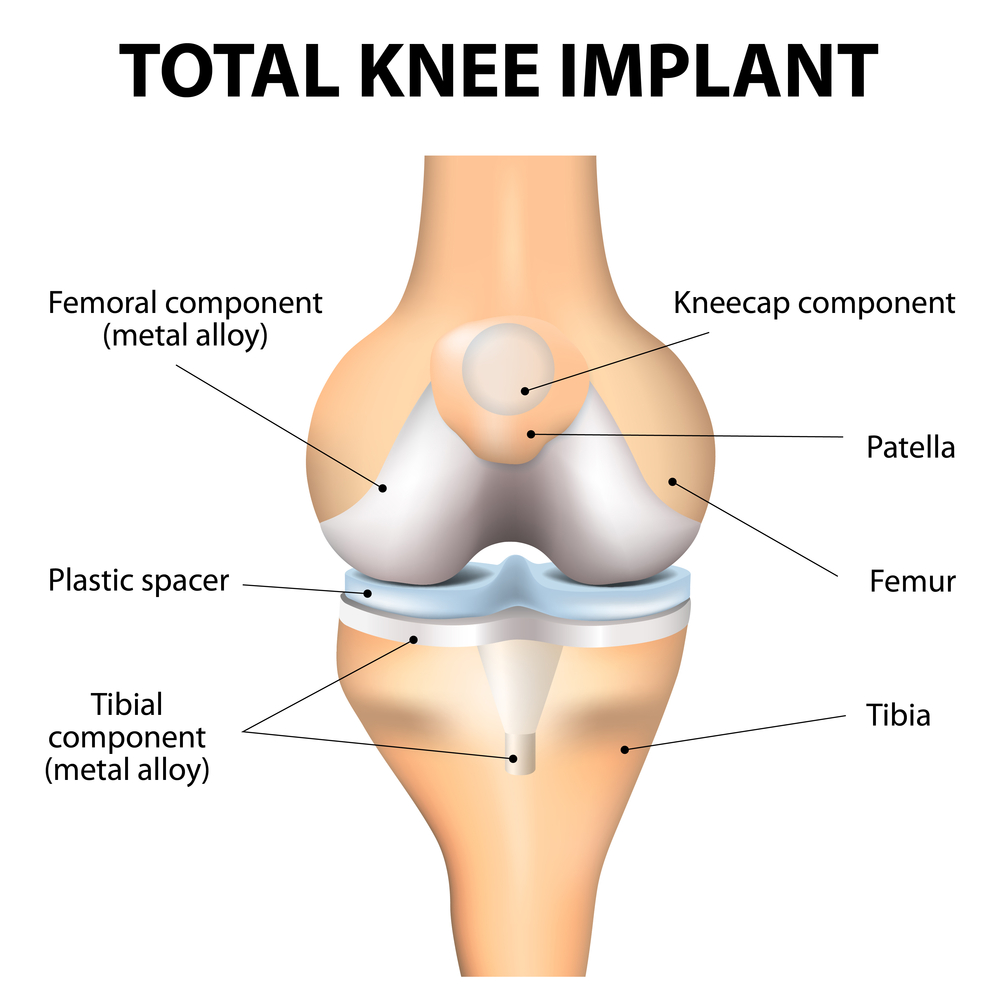Mark Kopec Now
Knee Replacement
The knee joint, a marvel of God’s engineering, allows us to walk, run, and navigate the world with ease. But when pain and stiffness set in, even the simplest movements become a challenge. Knee replacement surgery is a well-established procedure that can often offer significant relief for those with severely damaged knees. However, not all knee replacement surgeries are successful. If you have suffered injury following a knee replacement, you may be the victim of a surgical error that caused medical malpractice. Contact the Baltimore knee replacement lawyer at the Kopec Law Firm.
Symptoms
Several symptoms especially indicate potential knee problems:
- Pain: Constant or recurring pain, especially around the joint, is a major red flag.
- Stiffness: Difficulty bending or straightening the knee can significantly impact mobility.
- Swelling: Inflammation around the knee can cause tightness and limit movement.
- Instability: A feeling of giving way or buckling in the knee can be alarming.
- Grinding sensation: A crackling or grinding sound during movement may indicate cartilage damage.
- Decreased range of motion: Inability to fully bend or straighten the knee can hinder daily activities.
Orthopedic Surgeon
If you experience these symptoms, then you will likely need to consult with an orthopedic surgeon. These specialists diagnose and treat musculoskeletal conditions, including knee problems. They’ll conduct an examination, review your medical history, and then may order X-rays, MRIs, or other imaging tests to assess the extent of damage.
Treatment Options Before Surgery – Advice from the Baltimore Knee Replacement Lawyer
Knee replacement surgery is usually a last resort after exploring conservative treatment options:
- Medications: Pain relievers, anti-inflammatory drugs, and cortisone injections can provide temporary relief.
- Physical therapy: Strengthening exercises and improving flexibility can enhance knee function.
- Weight management: Losing excess weight reduces stress on the knee joint.
- Assistive devices: Braces or canes can offer support and stability.
Considering Knee Replacement
If conservative measures fail to provide adequate pain relief and improve mobility, then knee replacement surgery becomes a viable option. A Doctor most commonly performs it for severe osteoarthritis, a degenerative condition that wears down the protective cartilage in the knee joint. Other conditions like rheumatoid arthritis or a severe knee injury can also necessitate surgery.
The Surgical Process

Knee replacement surgery, also called total knee arthroplasty, involves replacing the damaged joint surfaces with artificial implants. The procedure typically takes 1-2 hours and the doctor performs it under general anesthesia. Here’s a simplified breakdown:
- Preparing the Bone: The surgeon removes the damaged cartilage and bone from the femur (thighbone), tibia (shinbone), and possibly the patella (kneecap).
- Positioning the Implants: Metal implants are positioned to replicate the knee’s natural anatomy, often cemented or press-fit into the bone.
- Resurfacing the Patella: Then the kneecap’s undersurface may be resurfaced with a plastic component, depending on the specific case.
- Balancing and Closing: The surgeon ensures proper alignment and movement of the new joint before closing the incision.
Types of Knee Replacements
There are two main types of knee replacements:
- Total Knee Replacement: This procedure replaces all the weight-bearing surfaces of the knee joint.
- Partial Knee Replacement: This option replaces only the damaged portion of the joint, typically used when arthritis is confined to a specific area.
After Surgery – Advice from the Baltimore Knee Replacement Lawyer
Recovery after knee replacement surgery is a gradual process. Physical therapy plays a vital role in regaining strength, flexibility, and range of motion. Most patients can walk with a walker or cane within a few days and gradually progress to independent walking. Full recovery can take up to a year, but significant pain relief and improved mobility are usually achieved much sooner. However, not everyone has a good outcome, and you may need to contact the Baltimore knee replacement lawyer at the Kopec Law Firm.
Potential Bad Outcomes – The Need for the Baltimore Knee Replacement Lawyer
- Infection: This is a serious complication that requires prompt treatment with antibiotics.
- Blood clots: Deep vein thrombosis (DVT) can occur in the legs and travel to the lungs, posing a life threat.
- Bleeding: Excessive bleeding during or after surgery can necessitate a blood transfusion.
- Stiffness: Working with a physical therapist is crucial to regain knee flexion and extension.
- Implant loosening or wear: Over time, the implants generally may loosen or wear, necessitating revision surgery.
Nerve Damage and the Baltimore Knee Replacement Lawyer
Nerve damage is one of the most harmful potential complications following knee replacement surgery. It can occur when nerves around the knee joint are irritated, stretched, compressed, or even cut during the procedure.
Here’s a breakdown of the causes, diagnosis, and treatment of nerve damage after knee replacement:
How It Happens:
- Incision: The two main nerves at risk are the saphenous nerve and the common peroneal nerve. These nerves run close to the typical incision sites for knee replacement. There’s a chance they could be nicked or compressed during the surgery.
- Scar tissue: As the surgical site heals, scar tissue can form around a nerve, putting pressure on it and causing pain or dysfunction.
Diagnosis
- Doctor: An orthopedic surgeon specializing in knee replacements will likely diagnose nerve damage. They’ll consider your symptoms, medical history, and perform a physical examination to assess your knee function and sensation.
- Tests: While X-rays and MRIs are helpful for visualizing the knee joint itself, they won’t diagnose nerve damage directly. A neurologist may also become involved. An electromyography (EMG) test might be used. This test measures the electrical activity of your muscles and nerves, helping identify any abnormalities caused by nerve damage.
Treatments
- Non-surgical options: These are often the first line of treatment. They include:
- Pain medication: Medications like over-the-counter pain relievers or prescription medications can help manage pain caused by nerve irritation.
- Physical therapy: Specific exercises can improve mobility and reduce pressure on the nerve.
- Steroid injections: Injections around the irritated nerve can help reduce inflammation and pain.
Surgery for Nerve Damage after Knee Replacement
If conservative measures don’t provide relief, the patient may consider surgery. This could involve:
- Neurolysis: This procedure involves removing scar tissue compressing the nerve.
- Nerve repair or grafting: In severe cases where the nerve is severed, surgery to repair or graft the nerve might be necessary.
Nerve recovery can be a slow process. Depending on the severity of the damage, it can take weeks to months, or even a year, to regain full function and sensation. However, function and sensation may never return.
Next Step – Contact the Baltimore Knee Replacement Lawyer
If you have suffered a bad outcome and have not made a full recovery, contact the Baltimore knee replacement lawyer at the Kopec Law Firm. Visit the free consultation page or video. Then contact the Kopec Law Firm at 800-604-0704 to speak directly with Attorney Mark Kopec. He is a top-rated Baltimore birth injury lawyer. The Kopec Law Firm is in Baltimore and pursues cases throughout Maryland and Washington, D.C.





